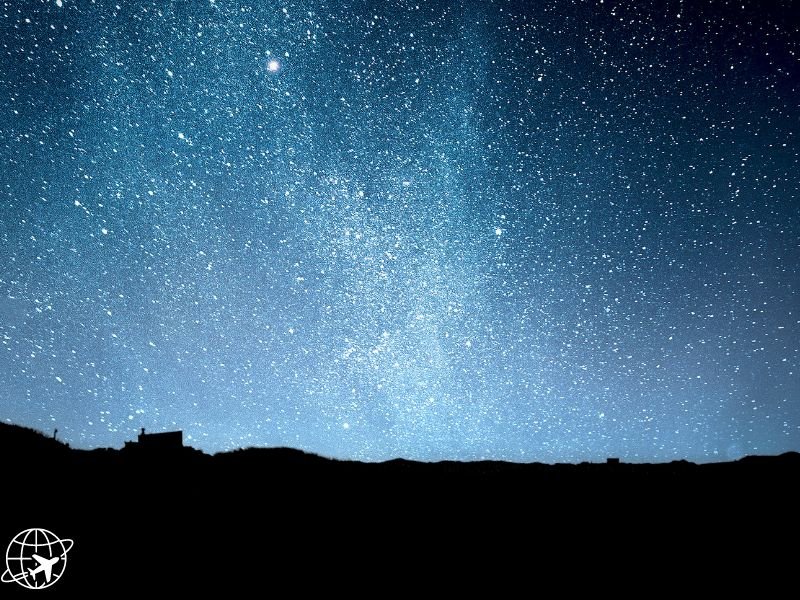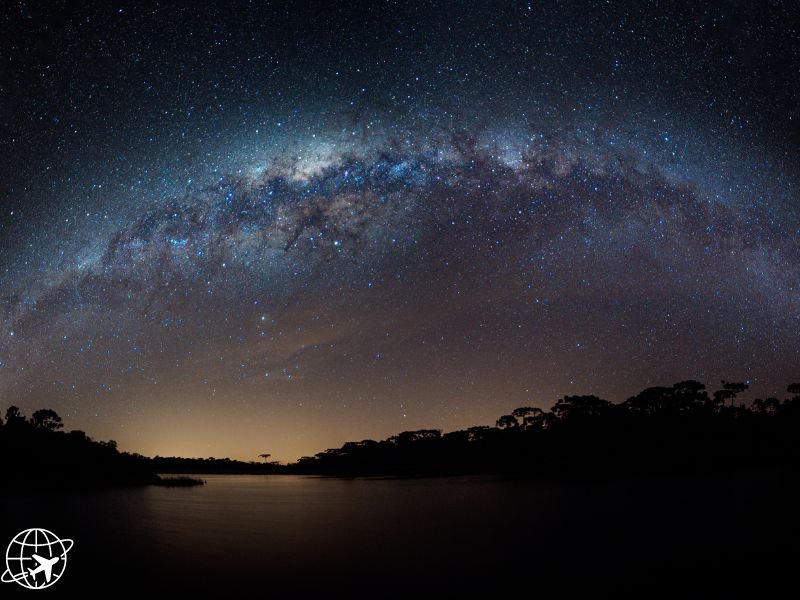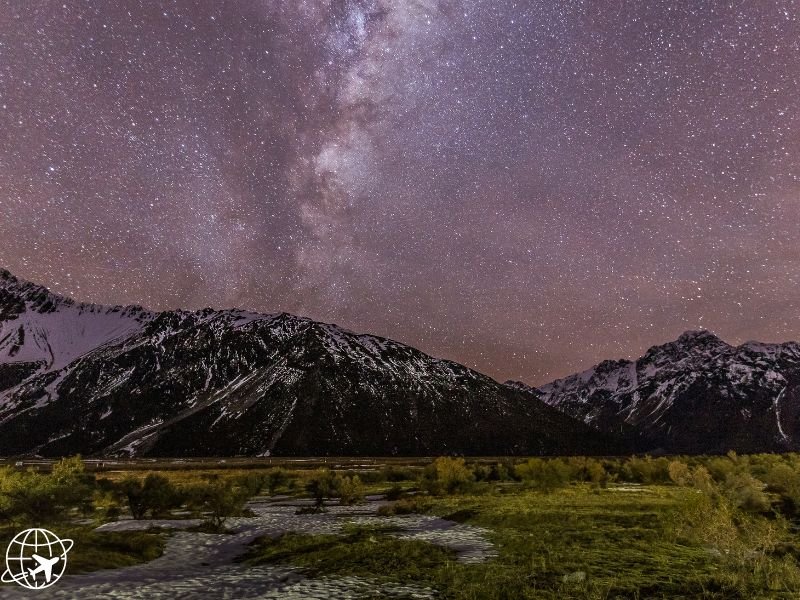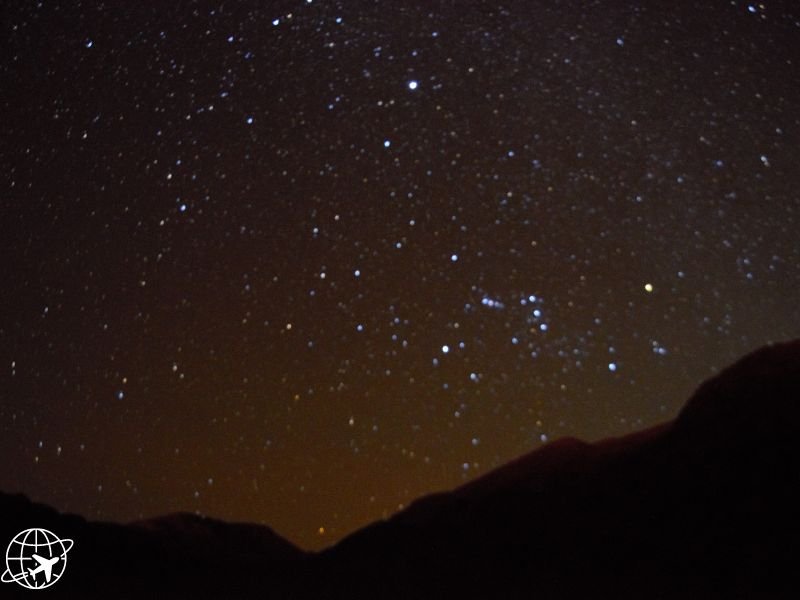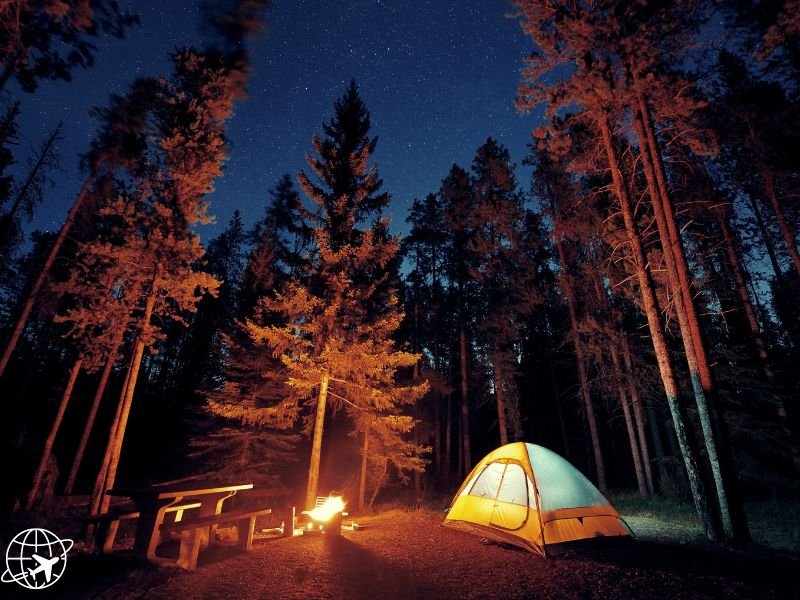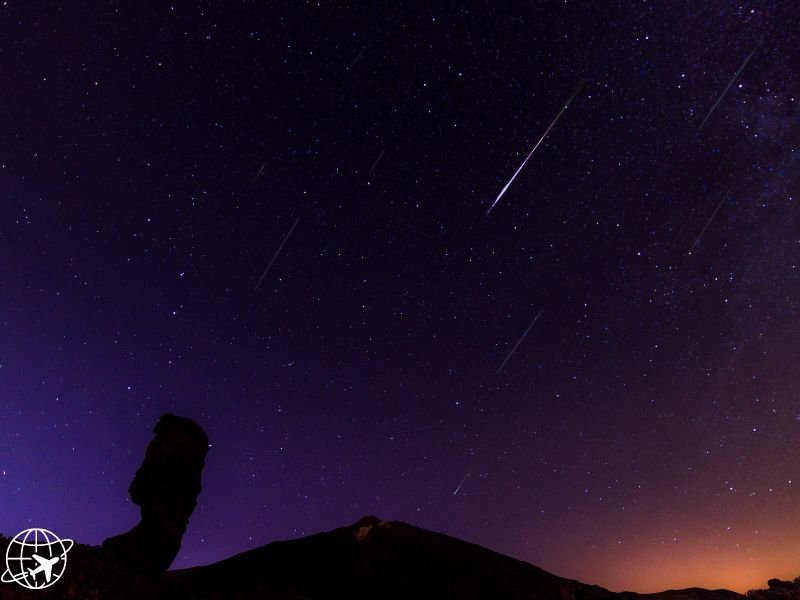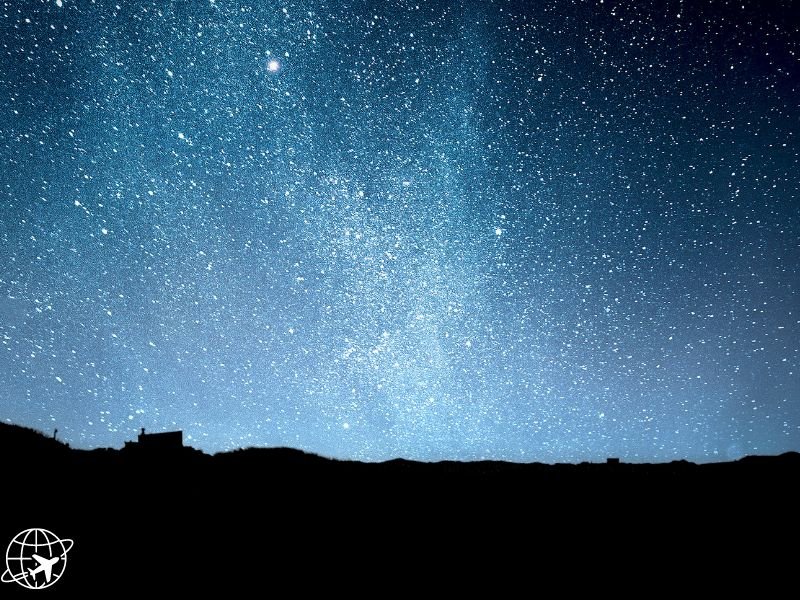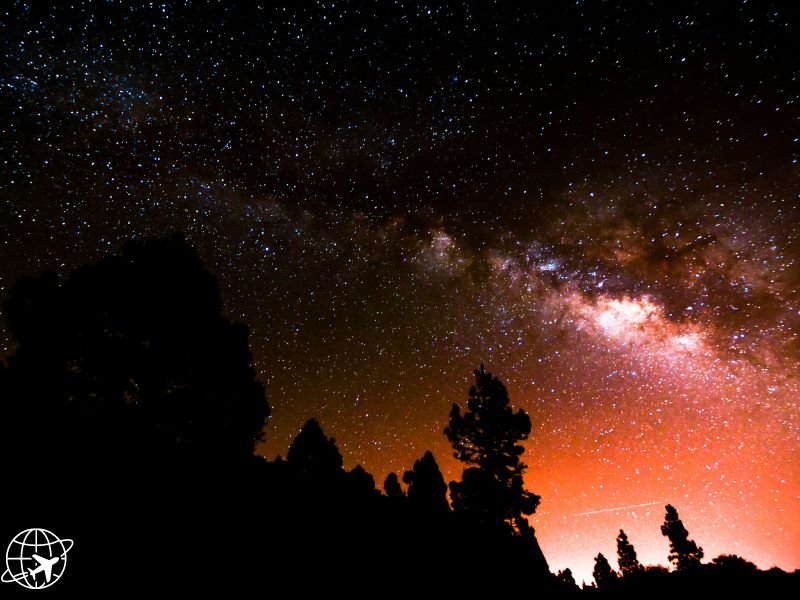Celestial Wonders
The allure of the night sky has captivated humanity for centuries. Throughout history, the cosmos has not only served as a canvas for storytelling and mythology but also sparked a profound fascination with the universe’s mysteries. Stargazing is a pastime enjoyed by many, providing an opportunity for reflection, exploration, and connection to nature. The beauty of epic night skies, filled with shimmering stars and breathtaking celestial phenomena like meteor showers, inspires travelers and astrophotographers to seek out the best locations for observing these wonders.
- Celestial Wonders
- Understanding Dark Sky Reserves
- Namibrand Nature Reserve, Namibia
- Aoraki Mackenzie Dark Sky Reserve, New Zealand
- The Atacama Desert, Chile
- Jasper National Park, Canada
- Tenerife, Canary Islands, Spain
- Summary of Optimal Stargazing Conditions
- Tips for Astrophotography on Your Stargazing Trip
- Conclusion: Embarking on a Celestial Adventure
The significance of venturing to dark skies goes beyond aesthetics; it fosters a sense of peace and tranquility often found in today’s fast-paced world. As urbanization expands, the encroaching artificial light diminishes our ability to witness the true vastness of the cosmos. The resulting light pollution obscures the beauty and vastness of the stars, leaving many yearning for an escape to the wilderness, where the Milky Way sprawls majestically across the horizon. Such landscapes awaken a sense of wonder, prompting exploration of remote areas known for their natural beauty and minimal light interference.
Traveling to places renowned for epic night skies not only offers stunning views but also provides an engaging experience for astrophotographers. Capturing the best stars and other celestial events can lead to stunning imagery that tells the story of our universe. Beyond photography, these destinations often hold cultural significance and historical narratives that enrich the experience further. As we embark on this journey to discover lesser-known locations that offer mesmerizing views of the heavens above, let us explore the unique attributes that make these spots prime choices for stargazers and adventurers alike.
Understanding Dark Sky Reserves
Dark Sky Reserves are designated areas specifically recognized for their exceptional quality of starry nights, providing optimal conditions for viewing celestial bodies. These reserves play a crucial role in preserving the beauty of natural nightscapes, offering a sanctuary for both wildlife and stargazers. By minimizing light pollution, they allow for an unimpeded view of the vast cosmos, making these locations ideal for experiencing epic night skies.
The importance of Dark Sky Reserves extends beyond mere aesthetics. They serve educational purposes, promoting awareness about the significance of preserving our natural environment and the night sky. These reserves showcase the splendor of various celestial phenomena, including meteor showers and the exquisite detail of constellations and galaxies. As a result, visitors can engage in meaningful travel experiences that combine the enjoyment of nature with astronomical discovery.
To achieve Dark Sky Reserve status, locations must meet specific criteria set by the International Dark-Sky Association (IDA). These criteria include the absence of light pollution, a commitment to preserving dark skies, and the implementation of effective lighting management strategies. Additionally, communities surrounding these reserves must prioritize safeguarding their night skies through education and outreach programs. As such, these areas not only provide the best stars for stargazing but also encourage responsible use of outdoor lighting.
Dark Sky Reserves are a must-visit for night sky enthusiasts seeking to witness the grandeur of meteor showers and other celestial events in a pristine environment. These destinations offer a unique blend of education, conservation, and adventure, making them vital locations for travelers eager to explore the depths of the universe. In summary, the emergence of these reserves signifies a growing recognition of the beauty and importance of our night skies, ensuring they remain a source of wonder for generations to come.
Namibrand Nature Reserve, Namibia
The Namibrand Nature Reserve, located in the heart of Namibia, offers one of the most breathtaking stargazing experiences on the planet. This expansive reserve spans approximately 1,500 square kilometers of pristine desert landscape, encompassing striking red dunes, gravel plains, and rich biodiversity. The most salient feature for stargazers is the reserve’s minimal light pollution, which creates a perfect canvas for an epic night sky. Visitors are often captivated by the sheer number of stars visible to the naked eye, along with captivating celestial phenomena such as meteor showers.
One of the best times to visit the Namibrand Nature Reserve for an unforgettable night sky experience is during the new moon phase, when the sky is at its darkest. Typically, the months of June through August present optimal conditions as these cooler months offer clearer skies. It’s also worth noting that the reserve hosts occasional astronomical events, such as the annual Perseid meteor showers in August, which attract numerous visitors keen on witnessing nature’s spectacular light show. During these periods, the chance of spotting “shooting stars” is notably high, providing a unique opportunity for visitors to enjoy this natural wonder.
For an enhanced experience in the Namibrand Nature Reserve, it is advisable to choose accommodations that promote dark sky viewing, such as lodges and camps that specialize in stargazing experiences. Bringing along a quality telescope or binoculars can also heighten the adventure, allowing you to focus on distant celestial bodies. Additionally, guided night tours led by knowledgeable astronomers can offer insights into the constellations and stories behind them, enriching the experience of observing the best stars from this remarkable corner of the world. Visitors are sure to leave with unforgettable memories of their time under the epic night skies of Namibia.
Aoraki Mackenzie Dark Sky Reserve, New Zealand
The Aoraki Mackenzie Dark Sky Reserve, situated in the picturesque South Island of New Zealand, is renowned for its stunning night skies. This unique reserve offers a backdrop of majestic mountains and serene lakes, creating a tranquil environment where visitors can immerse themselves in the beauty of the universe. Its designation as a dark sky reserve ensures minimal light pollution, making it one of the prime destinations for stargazing and witnessing the best stars in the southern hemisphere.
Beyond its breathtaking vistas, the Aoraki Mackenzie region holds significant cultural importance for the Māori people, who have worshipped the heavens and drawn inspiration from the stars for generations. The natural surroundings are intertwined with rich stories and traditions that highlight the relationship between the land and the sky. As visitors gaze upon the epic night skies, they can appreciate not only the visual splendor but also the deep cultural narratives that the stars represent.
For those eager to explore the cosmos, the area offers various astronomy tours led by knowledgeable guides. These tours provide insights into celestial phenomena, equipping travelers with the understanding to better appreciate the sights above. Notably, the reserve is an ideal location for observing meteor showers, further enhancing the experience for avid stargazers and astrophotographers alike. With its pristine conditions for viewing astronomical events, the Aoraki Mackenzie Dark Sky Reserve has become a haven for nature enthusiasts seeking to capture the wonder of the universe in their photographs. Whether one aims to experience breathtaking starry nights or simply wishes to indulge in the tranquility of nature, this destination is sure to leave a lasting impression.
The Atacama Desert, Chile
The Atacama Desert in Chile is renowned for being one of the driest places on Earth, making it an exceptional destination for stargazing enthusiasts. Its unique geographical features, including high elevation and minimal light pollution, contribute to the clarity of its night skies. Visitors can expect a stunning celestial view, where the visibility of the Milky Way is often unparalleled. This area offers an incredible opportunity for travelers to witness not only the best stars but also captivating meteor showers throughout the year.
One of the most significant advantages of the Atacama Desert is its high altitude, averaging around 2,400 meters (7,874 feet) above sea level. This elevation reduces atmospheric interference, allowing for a clearer view of the cosmos. The region’s extreme aridity means that cloud cover is infrequent, giving stargazers ample nights to enjoy the epic night skies. The combination of these factors makes it an ideal location not just to see celestial bodies but also to appreciate the beauty of astronomical events like meteor showers.
In addition to natural wonders, the Atacama Desert is home to several renowned observatories, such as the European Southern Observatory (ESO) located at La Silla. These establishments offer guided astronomy tours that cater to both novices and seasoned enthusiasts, providing insights into the operation of advanced telescopes and the study of the universe. Participants often have the chance to observe the best stars visually through high-powered equipment, enriching their travel experience. For keen observers, the annual Geminid and Perseid meteor showers provide spectacular displays, reaffirming why the Atacama Desert is considered one of the world’s premier stargazing destinations.
Jasper National Park, Canada
Jasper National Park, located in the Canadian Rockies, is renowned for its epic night skies, making it an exceptional destination for those seeking to experience the best stars and meteor showers. Officially designated as a Dark Sky Preserve, Jasper offers a stunningly clear view of the cosmos, with minimal light pollution that allows for unparalleled stargazing opportunities. This remarkable park spans over 11,000 square kilometers and provides diverse landscapes—from mountain ranges to forests—that enhance the celestial display during the night.
Accessibility is another contributing factor to Jasper’s popularity among astronomy enthusiasts. The park features several easily accessible viewing areas, such as Pyramid Lake and Maligne Lake, where visitors can set up their telescopes or simply enjoy the sprawling vista of stars overhead. Moreover, the local visitor center provides valuable information on celestial events and the best vantage points for observation. With its well-maintained roads, Jasper National Park welcomes travelers eager to witness the wonders of the night sky.
Throughout the year, the park hosts organized star parties that attract both novice and seasoned stargazers. These events, often led by knowledgeable guides, allow participants to observe celestial phenomena and learn about constellations, planets, and meteor showers. Special occurrences, such as the Perseid meteor showers in August or the Geminids in December, turn Jasper into a premier location to catch stunning displays of shooting stars. The combination of expert guidance and the natural beauty of the park makes it a must-visit for anyone wishing to experience a breathtaking night beneath the stars. In conclusion, Jasper National Park offers a unique blend of accessibility, organized events, and breathtaking views, solidifying its place as one of the best destinations for epic night skies and astronomical adventures.
Tenerife, Canary Islands, Spain
Tenerife, the largest of the Canary Islands, offers an ideal environment for those seeking to experience epic night skies. Its unique geographical features, particularly the dominant presence of Teide Volcano, create conditions that enhance visibility for celestial observation. At a height of 3,718 meters, Teide not only stands as Spain’s highest peak but also contributes significantly to the island’s microclimate, which is characterized by clear, dry air and minimal light pollution.
The absence of industrial areas nearby means that Tenerife provides an unobstructed view of the night sky, making it a prime location for stargazing enthusiasts and astrophotographers alike. Serious astronomers and casual stargazers will find that the extraordinary visibility of celestial bodies, coupled with the diverse landscapes, offers breathtaking views of the best stars in the universe. The combination of the island’s altitude and atmospheric clarity allows one to spot a wide array of constellations, planets, and occasionally, meteor showers.
Tenerife is home to several observatories, such as the Teide Observatory, situated at an elevation conducive to astronomy advancements. These observatories frequently host public tours, providing guided stargazing experiences that unveil the secrets of the cosmos. Visitors can participate in stargazing tours which often include expert guidance on identifying various celestial phenomena, enhancing the joy of traveling under the stars. Whether standing upon a volcanic crater or in a designated stargazing area, individuals are encouraged to immerse themselves in the magnificence of the night sky.
Overall, Tenerife presents a unique blend of natural beauty and astronomical opportunity, making it an exceptional destination for those eager to explore epic night skies and witness the wonders of the universe.
Summary of Optimal Stargazing Conditions
Experiencing the vast beauty of epic night skies requires consideration of several key factors that contribute to optimal stargazing conditions. First and foremost is the location. Remote areas far from urban centers generally offer the best opportunities to see the best stars. These locations typically have lower light pollution, allowing stargazers to appreciate the stars without the interference of city lights.
Weather is another crucial element in determining stargazing success. Clear night skies, with minimal cloud cover, significantly enhance visibility. Ideally, planning a trip during seasons with historically favorable weather conditions will yield a higher likelihood of seeing impressive celestial displays, including meteor showers. It is advisable to check local weather forecasts in advance and choose nights with predicted clear conditions for the best viewing experiences.
Furthermore, light pollution should be a primary consideration when selecting a stargazing destination. Using light pollution maps can assist travelers in identifying areas that maintain dark skies. Many parks and nature reserves have been designated as International Dark Sky Parks, which provide optimal conditions for astronomy enthusiasts. These protected areas ensure minimal artificial light, making them perfect spots to view the stars.
Elevation also plays an important role in enhancing stargazing experiences. Higher altitudes typically offer thinner atmosphere layers, reducing air turbulence and allowing for clearer views of the universe. Therefore, destinations located in mountainous regions can be particularly advantageous for observing epic night skies, as they often present panoramic views unobstructed by city lights.
By considering these crucial factors—location, weather, light pollution, and elevation—travelers can effectively choose the best destinations for observing the captivating beauty of the night sky, ensuring they witness the magic of the best stars and mesmerizing meteor showers.
Tips for Astrophotography on Your Stargazing Trip
Capturing the beauty of epic night skies can be a rewarding experience that enhances your travel adventures to some of the best stars and meteor showers. Whether you are a beginner or an experienced photographer, the following tips will assist you in making the most of your astrophotography endeavors.
First and foremost, choosing the right equipment is crucial. A DSLR or mirrorless camera with manual settings is ideal for astrophotography. This allows for full control over exposure, aperture, and ISO settings. A sturdy tripod is essential for stabilizing your camera during long exposure shots. Additionally, consider using a wide-angle lens with a large aperture (f/2.8 or wider), as this will help capture more of the night sky with minimal distortion.
When setting up your shot, it is important to use a high ISO setting to make the camera sensitive enough to light, enabling it to capture faint stars. Start with an ISO of around 1600 and adjust as needed based on your environment. Your shutter speed should also be carefully considered; a general rule is the 500 rule, which suggests dividing 500 by the focal length of your lens to avoid star trails. This will generally allow for exposures ranging from 15 to 30 seconds.
For focusing, switch your lens to manual focus and find a bright star to focus upon. This ensures that your images are sharp. Utilize the camera’s live view feature to fine-tune your focus accurately. Prior to your stargazing trip, familiarize yourself with the night sky using star maps or apps to identify constellations and the best spots to witness meteor showers, enriching your overall travel experience.
Finally, post-processing plays a significant role in astrophotography. Software like Adobe Lightroom or Photoshop can enhance your images, allowing you to adjust brightness, contrast, and colors to reveal the depths of the cosmos. With these tips in hand, you are well on your way to capturing captivating photographs of the epic night skies.
Conclusion: Embarking on a Celestial Adventure
The allure of epic night skies cannot be overstated. For those who are passionate about travel and have an appreciation for the wonders of astronomy, stargazing offers an unparalleled experience. Across the globe, various destinations are renowned for their ability to showcase the best stars and meteor showers, creating a mesmerizing tapestry of lights that enchants the observer. These locations often reside away from the bustling noise of urban life, allowing clearer views of the vast cosmos and providing the perfect backdrop for reflection and connection with nature.
Places such as national parks or remote coastal areas serve as ideal settings for this pursuit, as they frequently boast minimal light pollution, revealing the intricate details of the night sky. Each twinkle of a distant star or streak of a meteor shower becomes an invitation to pause and contemplate the majesty of the universe. For amateur astronomers and casual observers alike, the thrill of witnessing these celestial displays is an unforgettable experience, one that fosters a deeper appreciation for our planet and its place among the stars.
As you embark on your own journey to these awe-inspiring destinations, remember to prepare adequately. Bring along essentials such as a telescope or binoculars, a blanket for comfortable viewing, and perhaps a journal to document your observations. Embrace the serenity of the night and the beauty that unfolds above you, making each starlit moment a cherished memory. By seeking out places known for their extraordinary night skies, you ensure that your adventures are rich with natural beauty and wonder. This exploration not only enriches your wanderlust but also connects you with the timeless, captivating rhythms of the universe.

